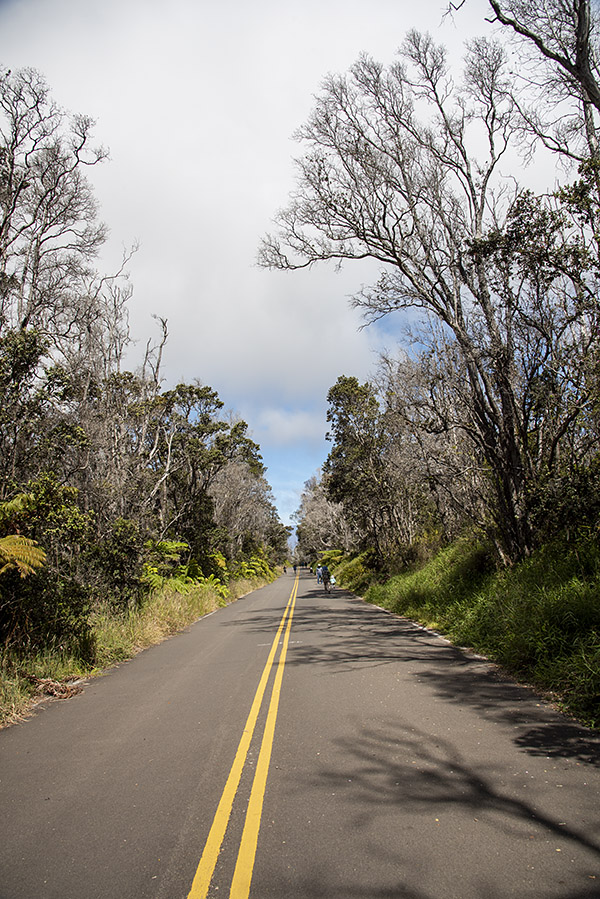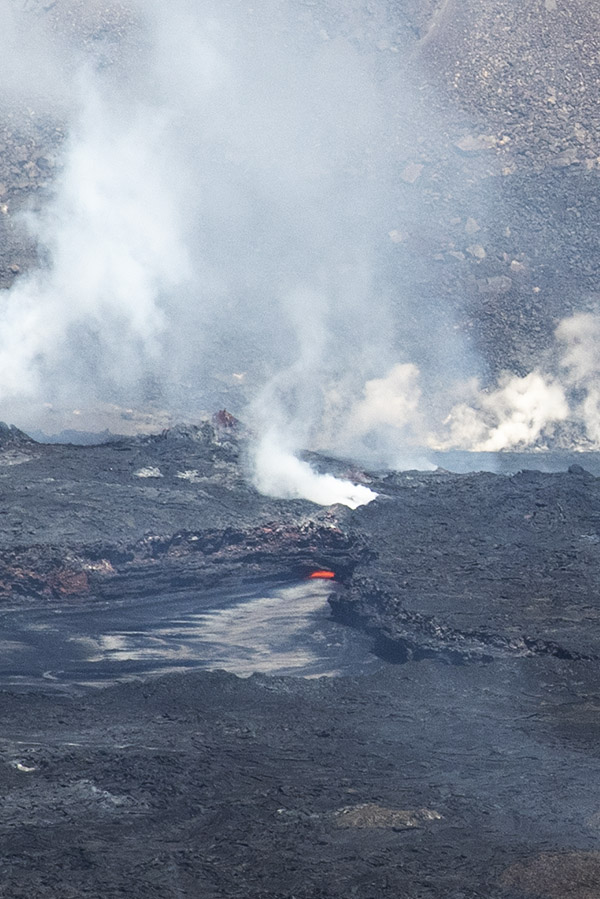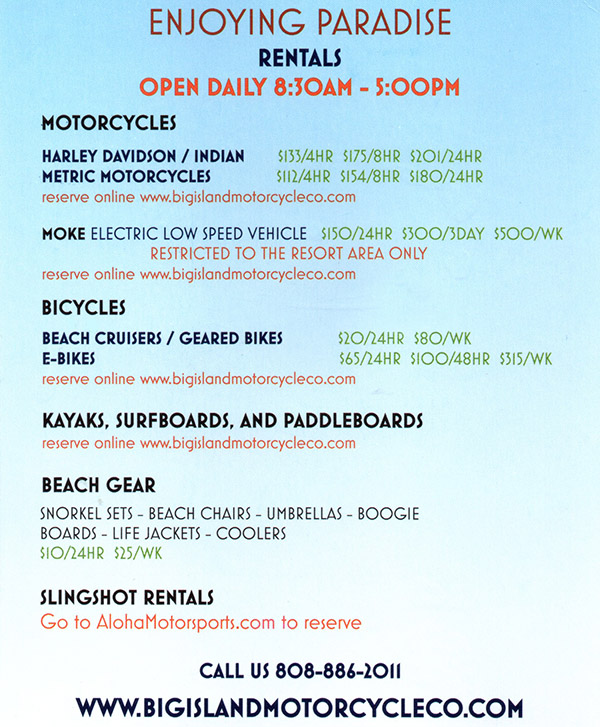The Big Island, Hawaii, was formed by volcanoes, like the other Hawaiian islands and nearly all others in the Pacific. Five volcanoes formed the Big Island, and one is still active. That’s the Kīlauea volcano. It’s the one you see above. It’s the one we visited recently.

It’s a bit of a hike to get to the Kīlauea volcano crater once you enter the Hawaii Volcanoes National Park (the photo above shows the way in), but the hike is worth it. Hawaii Volcanoes National Park is one of the few National Parks in Hawaii that charges admission. I have the brass pass (the senior citizen National Parks lifetime pass), which has to be one of the best deals ever.
The big photo at the top of this blog is the crater, and it was impressive. Hissing steam, a bit of lava flow, and a hint of what this planet is all about. It was only in the last 50 years that the US Navy completely mapped the Pacific floor. The Navy survey found many underwater mountains formed by volcanoes, all in a straight line. A theory emerged that these were formed by the same magma eruption (i.e., a volcano) that created the Hawaiian Islands (which are the end of that straight line). The eruption is a fixed point; the islands and underwater mountains that extend in a thousand-mile-long straight line occurred as a result of tectonic plate shift over this point. Fascinating stuff.

The red glow you see in the photo above is lava in the Kīlauea crater. I was a good half mile or more away from it, but thanks to the 24-120 Nikon lens and a bit of PhotoShop cropping, it looks like I’m right there. Trust me; I wasn’t.
We stayed just outside the Park on Volcano Road in a bed and breakfast tucked away deep in a tropical bamboo forest. It was pretty cool and very remote. Think banana trees, palms, humidity, colorful birds, and everything you might expect to see in an equatorial jungle. We had a herd of wild pigs briefly wander into our yard one afternoon (and I, without a rifle or a camera, could only stare). Surprisingly, the nights were deafening thanks to the Coqui frogs. The Coqui frogs are an invasive species from Puerto Rico. A few evidently hitched rides on plants coming from Puerto Rico to Hawaii. The Coqui have no natural enemies in Hawaii, and they reproduced to levels previously unheard of (folks who know about this stuff estimate the Hawaiian Coqui population density at roughly 2,000 frogs per acre, and with no natural enemies, the levels are still climbing). Well, maybe “unheard of” is probably a poor choice of words. Believe me, at night, all you can hear are the Coqui. Their “croak” is a 100-decibel “Co Kee” and when you multiply that by 2,000 per acre…well, you get the idea. How a tiny frog the size of half your thumb generates that kind of noise is beyond me. It’s deafening and goes from dusk to dawn. The good news is that the Coqui are only in the jungle areas; we didn’t have that problem on the other side of the island.
To state the obvious, you can’t ride your motorcycle to Hawaii. But you can rent a motorcycle there. The going rate is about $200 for a day, and if you rent for several days, the rate drops a bit. The roads through Hawaii are scenic, and in a week on the Big Island you can pretty much take in most of what there is to see. I checked out the motorcycle rentals in Hawaii’s Waikaloa Village. Big Island Motorcycle Company had Harley big twins, Sportsters, and Suzuki V-Stroms, along with Polaris three-wheelers and other vehicles. Gas prices in Hawaii were high, but surprisingly, they were below what gas costs in California these days.
Never miss an ExNotes blog!
Hit those popup ads!



